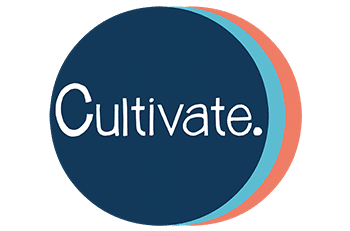The COVID Slide as Seen in Person
“I was supposed to learn this, but my teacher’s internet was going in and out, so I couldn’t understand it.”
“We went over this during an online class, so I didn’t get it.”
The frustration is real. So are the learning deficits. The quotes above come from students in my ACT prep class in the last month. I have been employed full time in the test prep industry for the past five years. Over that time I’ve worked with literally thousands of students, yet I have never seen learning gaps like this, especially in math.
Take a look at Cultivate Academics offering for SAT and ACT prep here.
Academic Deficits by the Numbers
Statistics confirm the experiences of my students. The NWEA, a nonprofit test provider, estimates that students are currently four to six months behind where they would be in a normal school year, with the biggest gaps in math. Another educational entity, McKinsey, estimates that the average student will be up to year behind in math by the fall.
ACT and SAT Prep Challenges
The COVID slide spells bad news for a student striving to get into the college of her dreams. To put it bluntly, most students will score lower on the ACT and SAT because of the COVID slide, especially in math. Of course, these tests loom large in a student’s college portfolio, so now isn’t a good time to fall behind.
Some Colleges are Going Test Optional
There is a flicker of hope. Some colleges are not requiring the SAT or the ACT. Some schools, especially in California, will not even look at these tests. This will give students some breathing room, but learning deficits are not the reason that schools are going test optional. The real reason is that test dates are being cancelled, especially for the SAT. It stands to reason, then, that as more tests are administered, more colleges will soon require the SAT or ACT again.
Also, there is a difference between test optional and a school simply not looking at a test. Imagine a scenario where a student got a 35 out of 36 on the ACT. A test optional university will still be impressed by this score. A 35 will catapult this student above students with similar resumes, but no test score. The thing is, I’ve seen many students start with a 27 and improve to a 35 through test prep. It would be foolish to waste such an opportunity.
The Standard Plan for Test Prep before COVID
To understand how to overcome the COVID slide for the SAT and ACT, it is best to first understand what preparation for these tests looks like in a normal year. The standard plan for test prep is to study for about two months the summer after a student’s sophomore year. At this point, most college-bound students will have just finished Algebra II and will be ready for the math on these tests. The standard plan has most students enroll in large classes that teach strategies. I’ve seen class sizes range from ten students to 1000 students.
Another advantage of this standard plan is that a student has a whole year to study if his score isn’t high enough. Of course, there are endless variations on this plan that take each student’s unique situation into account. Nevertheless, most students who prepare for the SAT or ACT will do something similar to this plan.
Two Ways to Crush Test Prep in the Time of COVID
There are two basic options to adjust the standard test prep plan in the time of COVID. The first option is to use individual tutoring instead of only using a large, strategies-based class. An experienced tutor can spot a student’s weaknesses and address them, whereas this will never happen in a large class. In previous years, college-bound students with A’s and B’s knew the content of the SAT and ACT. It’s just that these tests are tricky, and they needed the strategies. With COVID deficits, these students are behind in the basic academic content, so strategies-based classes may not cut it. In concrete terms, not as many students will know the quadratic formula this year.
The second option to address the COVID slide for the SAT or ACT is to double up on classroom instruction. Instead of taking one class, take two. I do not suggest starting test prep before a student has finished algebra II. However, a student may simply need an extra two months of studying to catch up, so plan accordingly. If a family cannot afford this option, then see if an extra course in SAT or ACT math is available, since this is where most gaps are occurring.
Most college-bound students can use test prep to their advantage. This still holds true, even in the time of COVID.
– Benjamin Smith | Master Test Prep Tutor
Benjamin Smith is Cultivate Academics’ expert test prep tutor. With a background in English and education, Ben brings with him the empathy and patience necessary to work with students preparing for high stakes standardized tests including the ACT, SAT, boarding school admissions tests, and the GRE. Ben’s experience includes working for one of the nation’s most notable test prep companies, tutor training, and curriculum development. A recipient of a perfect 36 on the ACT, Mr. Smith prides himself on keeping up to date with changes in national testing. At Cultivate, Ben has improved student test scores immensely through in-person and online prep camps as well as one-on-one tutoring.

